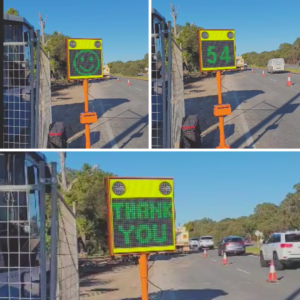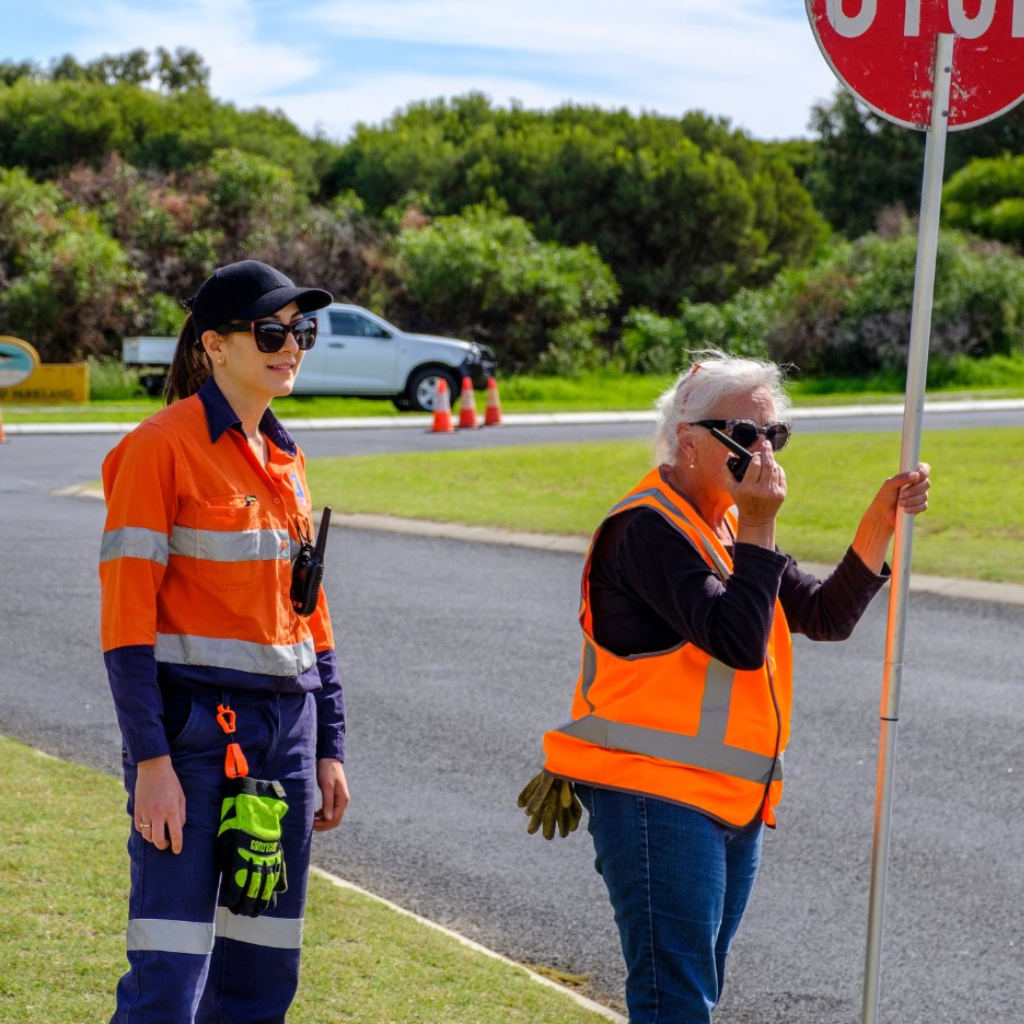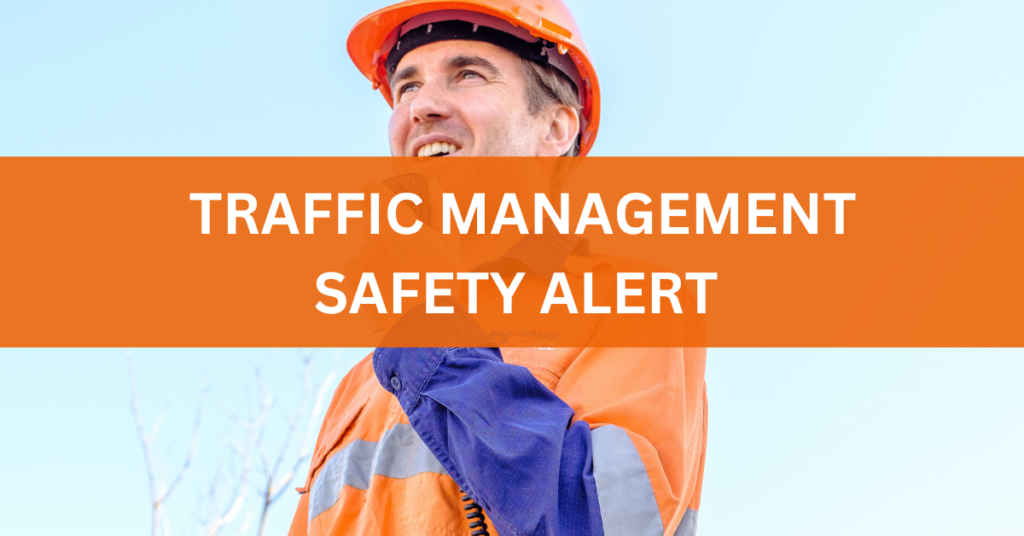Main Roads WA has released a NEW Code of Practice for Works on Roads May 2023. As we only just had a newly released Code of Practice for Works on Roads in March 2023, this edition only has minor updates. We’ve put together a helpful article that summarises the key changes from this update and also the major update in March 2023 so you can stay across all the current changes.
If you and your organisation work on or near roads, then this is a must-read for you. The following key changes have been updated;
May 2023 Updates
New Section: U-Turn DETOUR Ahead Signs (6.1.11)
The U-Turn DETOUR Ahead sign (MMS-DIV-10) may be used where a detour route involves traffic undertaking a U-turn. Traffic should only be directed to undertake a U-turn at roundabouts or at traffic signals where U-turns are permitted.
The U-Turn DETOUR ahead sign may be used as a standalone sign if it is within a purpose made frame. Alternatively, if there are no relevant messages that may be added to the assembly two blanks (600 x 600) may be added to the MMS frame when using the sign.
Section 6.2.4: Selection and Use of MMS (newly added section)
All Main Roads approved Multi-Message Signs are on the Main Roads website atwww.mainroads.wa.gov.au; go to ‘Technical & Commercial’ > ‘Technical Library’ > ‘Signs Index’ > Multi Message Signs’.
For the sign application schedule refer to Appendix 5, this must be read in conjunction with clause 4.2.2 of AS1742.3.
The requirement within AS1742.3 that there shall be no more than one regulatory sign panel in the same MMS frame does not apply when using a regulatory sign that displays the vehicles excepted message or the AT STREET NAME sign (MMS-REG-13),
Example use of more than one regulatory sign within the same MMS frame:
Appendix 5:
MMS-ADV-31 may be used in either side of the frame
MMS-DIV-10 added
March 2023 Updates
If you and your organisation work on or near roads, then this is a must-read for you. The following key changes were updated in March 2023
New Section: Traffic Modelling (2.4)
Main Roads is currently developing a traffic modelling guideline, the Modelling Guidelines for Roadworks – Temporary Traffic Management, to apply when the proposed temporary traffic management will redistribute traffic, significantly lowering the level of service and safety of the surrounding road network, including isolated intersections. This guideline will help determine the appropriate traffic analysis that will be required. As of the date of publication of the Code, the draft will be sent out for stakeholder review and will be finalised by mid-2023.
Portable Traffic Control Devices (Section 6.8.3)
As per AGTTM portable traffic control devices (PTCD) are the preferred method to control traffic.
PTCDs must be used as the method of traffic control, for the following roads:
- Any road that is under the control of Main Roads WA*, OR
- Any other road with:
o a permanent speed limit of 90 km/h or more and over 2,000 vpd*; OR
o a permanent speed limit of 70 km/h or more and over 10,000 vpd*.
*refer to exceptions listed below.
Works on roads outside of the above should still consider the use of PTCDs and they may still be required based on a risk assessment. Traffic management planners should also refer to contractual requirements that may require the use of PTCDs regardless of the speed and/or traffic volume.
It is recognised that there is a need to allow some exceptions to the mandatory use of PTCDs detailed above. Traffic controllers using stop-slow bats may be permitted in the following circumstances:
- On roads with less than 300 vpd based on a risk assessment
- At permanent traffic signals based on a risk assessment
- Where the total cumulative time of the stop-slow activity over a 24-hour period is 5 minutes or less based on a risk assessment
- Activities 5 to 15 minutes at a single location* based on a documented risk assessment with the following:
o a site specific TMP, OR
o a TGS (within an authorised TMP) determined to be site suitable by a person with WTM/AWTM accreditation
- Stop slow permitted for TTM set up and pack up, e.g. holding traffic to set up the signal or implementing a lateral shift on a 2 lane 2-way road
- Emergency and Incident Management
- In the event of failure of the PTCDs
*may be multiple work locations
Any use of PTCDs, or other traffic control, to be within an authorised TMP prepared in accordance with section 4.2.
Where there are other roadside features that prevent a PTCD from being used these are to be identified and mitigated where possible, with a TC only being used if an RTM has risk assessed and endorsed the variation for Road authority endorsement (see section 4.5).
Truck Mounted Attenuators (Section 6.9)
A truck mounted attenuator (TMA) is a combination of Host Vehicle with a mounted Crash Attenuator to protect road workers.
The Requirements for the use of Truck Mounted Attenuators (TMAs) in WA – Code of Practice have now been adopted as a minimum requirement in WA.
It is intended to expand the use of TMAs on the Main Roads network by 2024 to roads with a speed limit of 80 km/h or more and more than 20,000 vpd (AADT).
Trailer Mounted Attenuators are not permitted in WA.
Refer to section 8.7 for TMA operator training requirements.
Speed Feedback Signs (Section 7.3)
Speed feedback signs (also referred to as speed radar signs, speed LED signs, Vehicle Activated Signs or speed radar VMS) detect vehicle speeds (using laser speed-detection equipment, for example) and either the speed or a message (e.g. SLOW DOWN) is displayed on an electronic sign.
The primary purpose is to make drivers aware of their speed and encourage them to reduce their speed through the worksite. Research indicates that these are very effective in reducing drivers speed for short term purposes.
Speeds above the speed limit must not be displayed on the sign, i.e. just a message, such as SLOW DOWN, should be shown.
Main Roads had planned to mandate the use of speed feedback signs at high-risk locations in 2023, however feedback received indicated there were inadequate supply of the devices. A further 12 months will be provided to allow industry to source the devices.
As of 1 February 2024 speed feedback signs must be used at static worksites on Main Roads’ roads when all the following apply:
- Workers on foot are not protected by a road safety barrier; and
- Works conducted at the location for a duration of 8 hours or more; and
- Traffic volume of 15,000 vpd (AADT) or more; and
- There is a temporary speed reduction of 30 km/h or more
Roads likely to be included are listed below in table 19.
The speed feedback display does not have to be displayed at all times e.g. the display may be turned off and the device used to gather speed data when trialling other speed control measures. Speed feedback signs are not recommended to be used when there are more than 2 lanes of
traffic travelling in one direction. Speed feedback signs may be used at other locations to encourage motorists to reduce speed
and/or to collect speed data. The speed feedback sign must be included in the TGS.
New Section: Roadworks Pilot Vehicles (Section 6.8.7)
A roadwork pilot vehicle, consistent with the requirements of AGTTM Part 3, should be considered on all Main Roads’ roads where all the following conditions apply, unless otherwise supported by a risk assessment:
- the closure of one or more lanes that necessitates the use of a shuttle flow with use of a PTCD or traffic controller; and
- the travel path for vehicles is not clearly delineated for the full length of the lane closure with cones, bollards or similar.
Further to all the above conditions, a roadwork pilot vehicle must be utilised when all the above apply as well as all the following conditions applying:
- the length of the shuttle flow is greater than 500 m; and
- the traffic volume of the road is greater than 500 vehicles / day (AADT).
The roadworks pilot vehicle driver must have a current driver’s licence, BWTM accreditation and be competent to perform roadwork pilot vehicle driver duties.
NOTE: This task is separate to and different from the requirements for pilot vehicles for heavy vehicles in general traffic situations.
New Section: Advance Warning on Freeways and High-Speed High-Volume Roads (Section 6.1.10)
Where advance warning signs (including vehicle or trailer mounted VMS) are required they may be omitted at worksites where the following applies:
- The removal of the advance warning is supported by a risk assessment undertaken by an RTM; and
- A TMA is deployed to protect the work area (TMA to display required TTM signs) OR the work area is behind a road safety barrier; and
- The work area, including TMA, is not located within a running lane (e.g. works on verge, shoulder or emergency lane); and
- A speed buffer zone is not required prior to the worksite; and
- Approaching vehicles have at least 200 m of sight distance to the worksite
What Do I Need To Do?
As a result of the above changes, here are some recommended actions or steps to take;
- Make sure you are a subscriber to our mailing list – that way you will receive this and any future updates direct to your mailbox. To sign up click here.
- Download and read the latest Main Roads WA Code of Practice Works on Road document. Please note there are other changes not summarised in this article, therefore it is important you read the full updated document.
- Inform your organisation and co-workers about these new changes.
- Review your workplace policies, procedures and other documents that may be impacted. Schedule time to update workplace documents and convey these changes to your team.
Got Questions?
Do you have any questions and need further assistance with any part of the expected new Main Roads WA Code of Practice for Works on Roads? Get in touch and contact us.
Do you need training?
Do you need temporary traffic management training for your team? We have a wide range of public training course’s view calendar here or our team can travel to your workplace for onsite training request a quote here.






